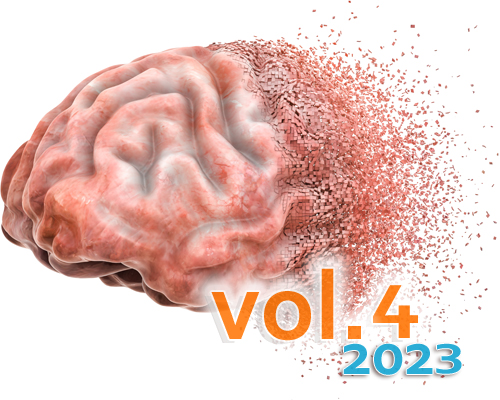Neurodegeneration: 2023 update
DOI:
https://doi.org/10.17879/freeneuropathology-2023-4899Keywords:
Neurodegeneration, Neuropathology, Aging, Alzheimer disease, Tauopathy, α-synucleinopathy, TDP-43 proteinopathy, Traumatic brain injuryAbstract
This paper reviews ten highly impactful studies published in the previous year selected by the author from the neurodegenerative neuropathology literature. As in previous years, the focus is to highlight human tissue-based experimentation most relevant to neuropathologists. A concerted effort was made to balance the selected studies across disease categories, approaches, and methodologies to capture the breadth of the research landscape. Studies include an integrated proteomic and transcriptomic study of Alzheimer disease (AD) and new consensus diagnostic neuropathological criteria for progressive supranuclear palsy. A number of studies looking at TAR DNA-binding protein 43 (TDP-43) are highlighted. One examined interaction between AD and limbic age-related TDP-43 encephalopathy (LATE) and yet another demonstrated how TDP-43 represses cryptic exon inclusion in UNC13A, suggesting a novel pathogenic mechanism. Most surprisingly, three cryogenic electron microscopy (cryo-EM) studies showed that TMEM106B filaments form the core of TDP-43-positive inclusions. Cryo-EM revealed a prion protein amyloid structure from aggregates in Gerstmann-Sträussler-Scheinker disease. There was an elegant functional genomic study cataloging microglial gene expression in the human brain. A study shed light on how APOE influences chronic traumatic encephalopathy. A pathoanatomical study tested the dual hit hypothesis of Lewy body progression throughout the nervous system. And finally, deep learning continues to show its promise with application of a weakly supervised multiple instance learning paradigm to assess aging post-mortem brains.
Metrics
Published
How to Cite
Issue
Section
License
Copyright (c) 2023 John Fonda Crary

This work is licensed under a Creative Commons Attribution 4.0 International License.
Papers are published open access under the Creative Commons BY 4.0 license. This license lets others distribute, remix, adapt, and build upon your work, even commercially, as long as they credit you for the original creation. Data included in the article are made available under the CC0 1.0 Public Domain Dedication waiver, unless otherwise stated, meaning that all copyrights are waived.



















